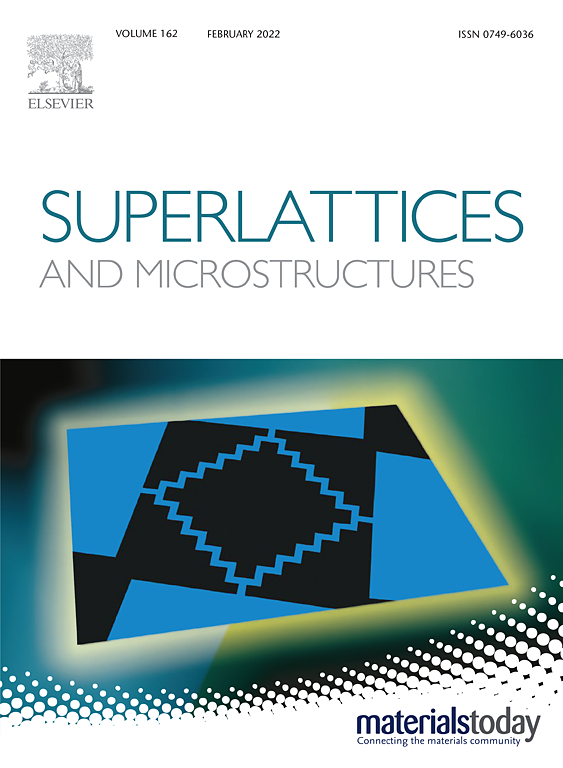Constructing and regulating nanochannels in two-dimensional-material-based membranes for specified separation applications
IF 3.3
3区 物理与天体物理
Q2 PHYSICS, CONDENSED MATTER
引用次数: 2
Abstract
The two-dimensional (2D) materials offer atomic-level thickness and unique physical and chemical properties for the preparation of a new class of membranes, i.e., nanochannel membranes. The nanochannel membranes have been utilized in a broad spectrum of new separation applications. However, the instability of the nanochannels, interfacial instability of 2D materials, and the swelling problem could damage the membrane performance, such as permeability, selectivity, and service lifetime. Innovative strategies for constructing and regulating the nanochannels are enthusiastically explored to address these challenges. Along this line, in this work, we first provide insight into the mechanisms of the nanochannel construction, the separation mechanism, and the effect of nanochannels on the separation performance. Then, the strategies developed in the literature, in particular, the strategies for the preparation of ideal 2D nanosheets, the strategies for constructing nanochannels, and the strategies for regulating the characteristics of nanochannels (channel size, channel length, channel morphology, and channel surface physicochemical properties) are systematically summarized. After that, we briefly introduce the application of 2D-material-based nanochannel membranes and outline the current challenges and provide an outlook in the further exploration of separation mechanism, large-scale manufacturing, and the eventual commercialization of the membranes.在特定分离应用的二维材料基膜中构建和调节纳米通道
二维(2D)材料提供原子级厚度和独特的物理和化学性质,用于制备新型膜,即纳米通道膜。纳米通道膜已广泛应用于新的分离领域。然而,纳米通道的不稳定性、二维材料的界面不稳定性和膨胀问题会破坏膜的性能,如渗透性、选择性和使用寿命。为了应对这些挑战,人们积极探索构建和调节纳米通道的创新策略。在这项工作中,我们首先深入了解了纳米通道的构建机制、分离机制以及纳米通道对分离性能的影响。然后,系统总结了文献中发展的策略,特别是制备理想二维纳米片的策略,构建纳米通道的策略,以及调节纳米通道特性(通道大小,通道长度,通道形态和通道表面物理化学性质)的策略。然后,我们简要介绍了基于二维材料的纳米通道膜的应用,概述了当前面临的挑战,并对进一步探索分离机制,大规模制造和最终商业化的膜进行了展望。
本文章由计算机程序翻译,如有差异,请以英文原文为准。
求助全文
约1分钟内获得全文
求助全文
来源期刊

Superlattices and Microstructures
物理-物理:凝聚态物理
CiteScore
6.10
自引率
3.20%
发文量
35
审稿时长
2.8 months
期刊介绍:
Superlattices and Microstructures has continued as Micro and Nanostructures. Micro and Nanostructures is a journal disseminating the science and technology of micro-structures and nano-structures in materials and their devices, including individual and collective use of semiconductors, metals and insulators for the exploitation of their unique properties. The journal hosts papers dealing with fundamental and applied experimental research as well as theoretical studies. Fields of interest, including emerging ones, cover:
• Novel micro and nanostructures
• Nanomaterials (nanowires, nanodots, 2D materials ) and devices
• Synthetic heterostructures
• Plasmonics
• Micro and nano-defects in materials (semiconductor, metal and insulators)
• Surfaces and interfaces of thin films
In addition to Research Papers, the journal aims at publishing Topical Reviews providing insights into rapidly evolving or more mature fields. Written by leading researchers in their respective fields, those articles are commissioned by the Editorial Board.
Formerly known as Superlattices and Microstructures, with a 2021 IF of 3.22 and 2021 CiteScore of 5.4
 求助内容:
求助内容: 应助结果提醒方式:
应助结果提醒方式:


